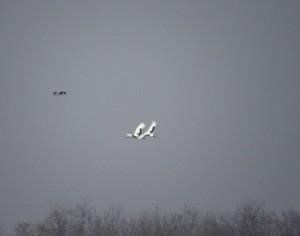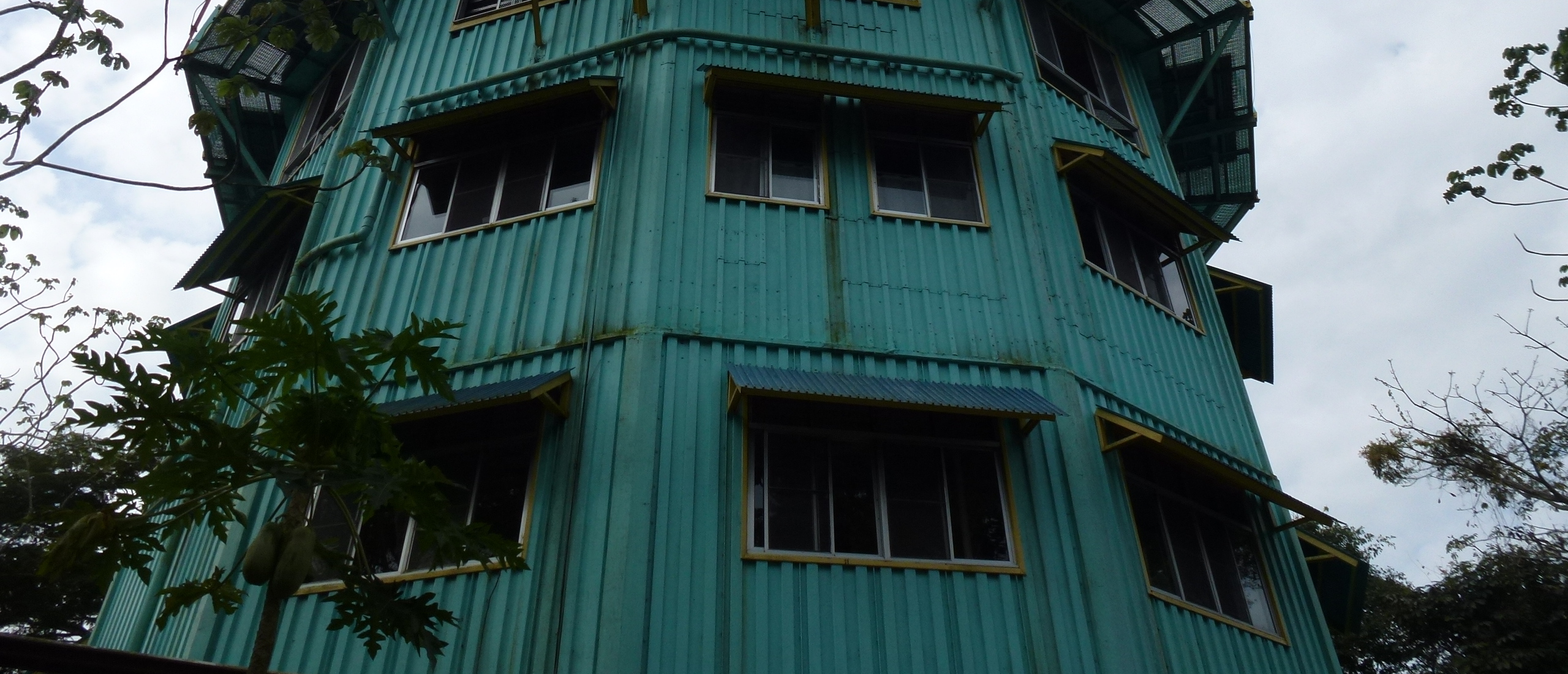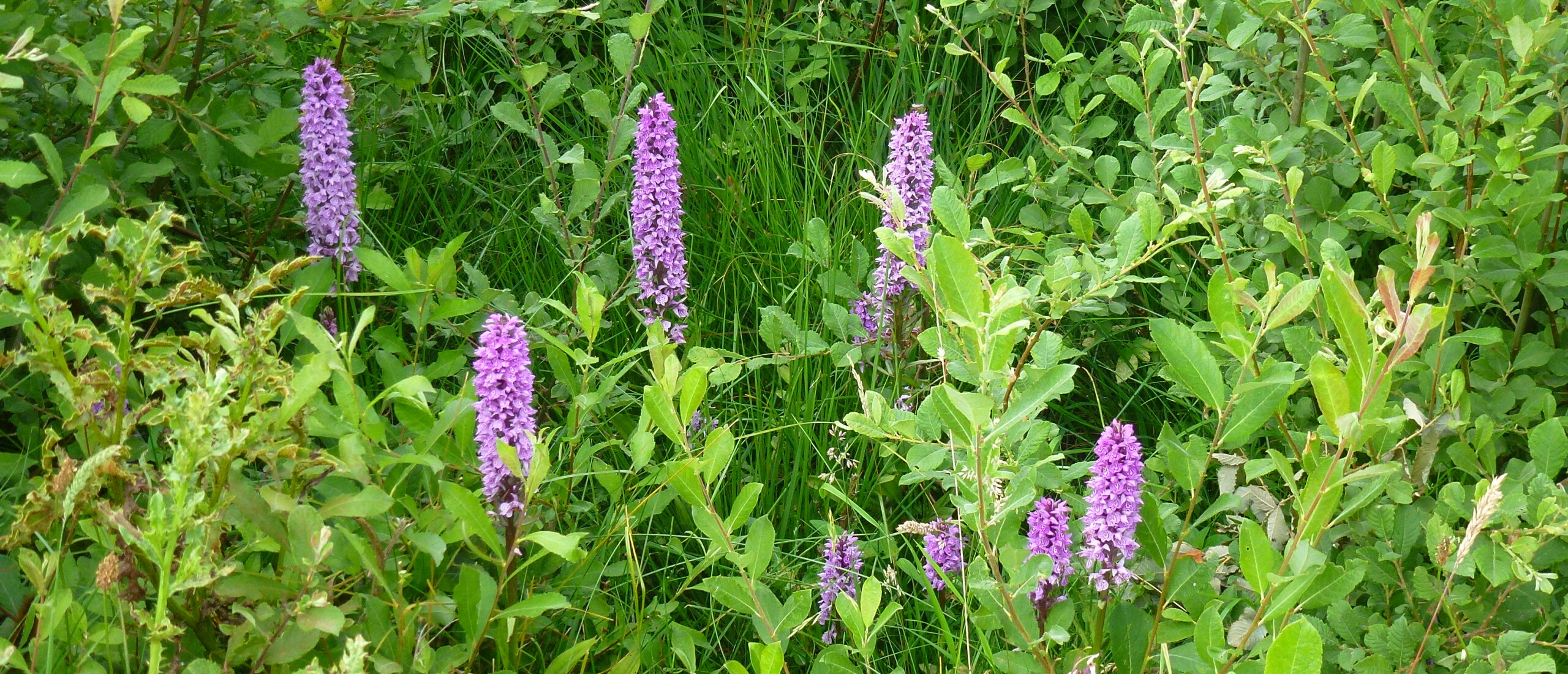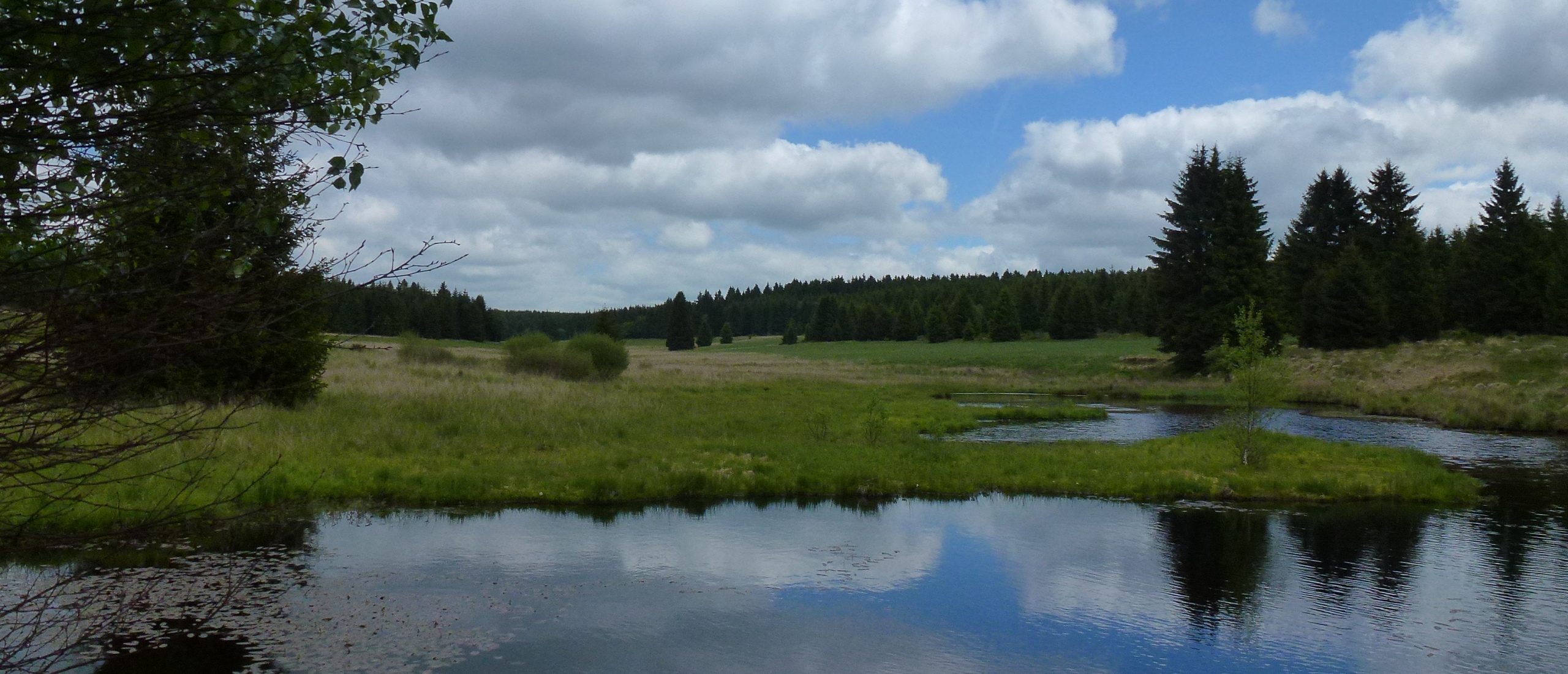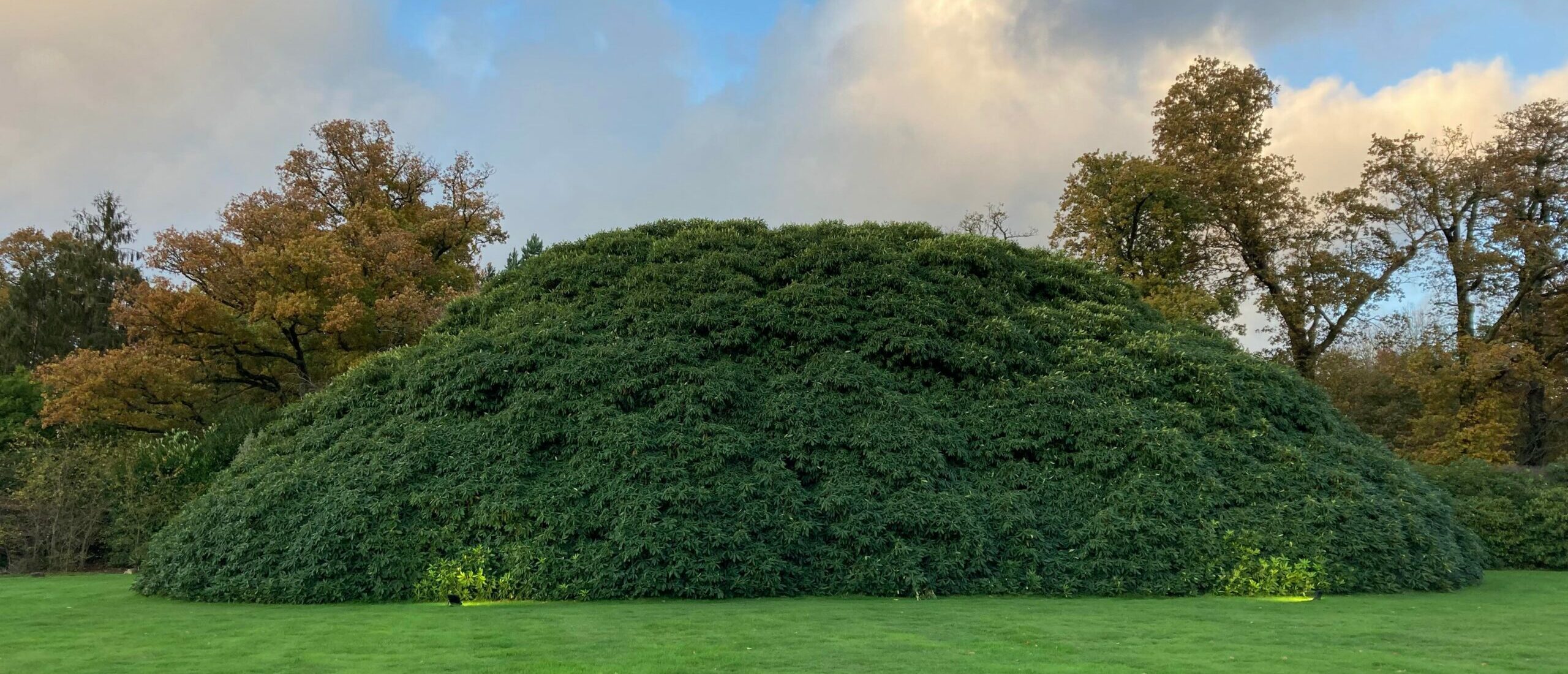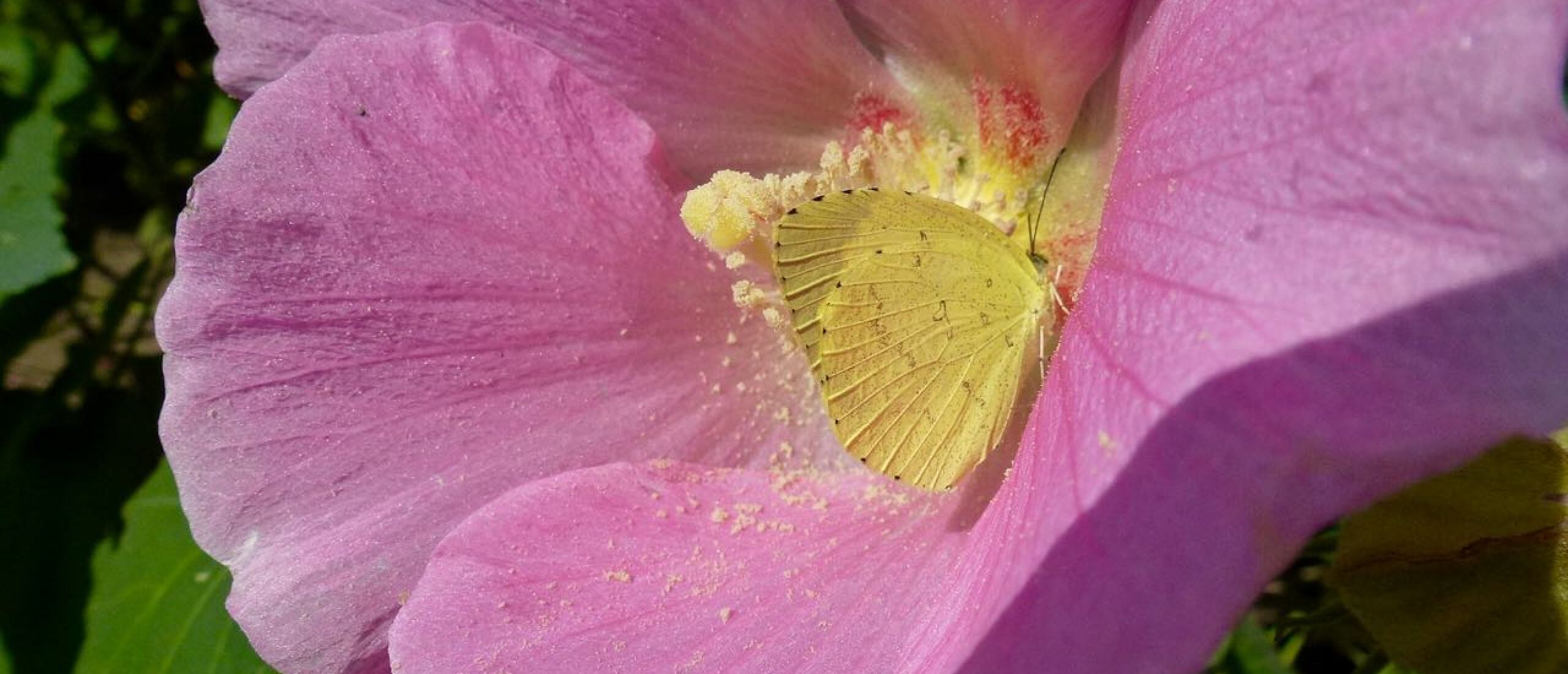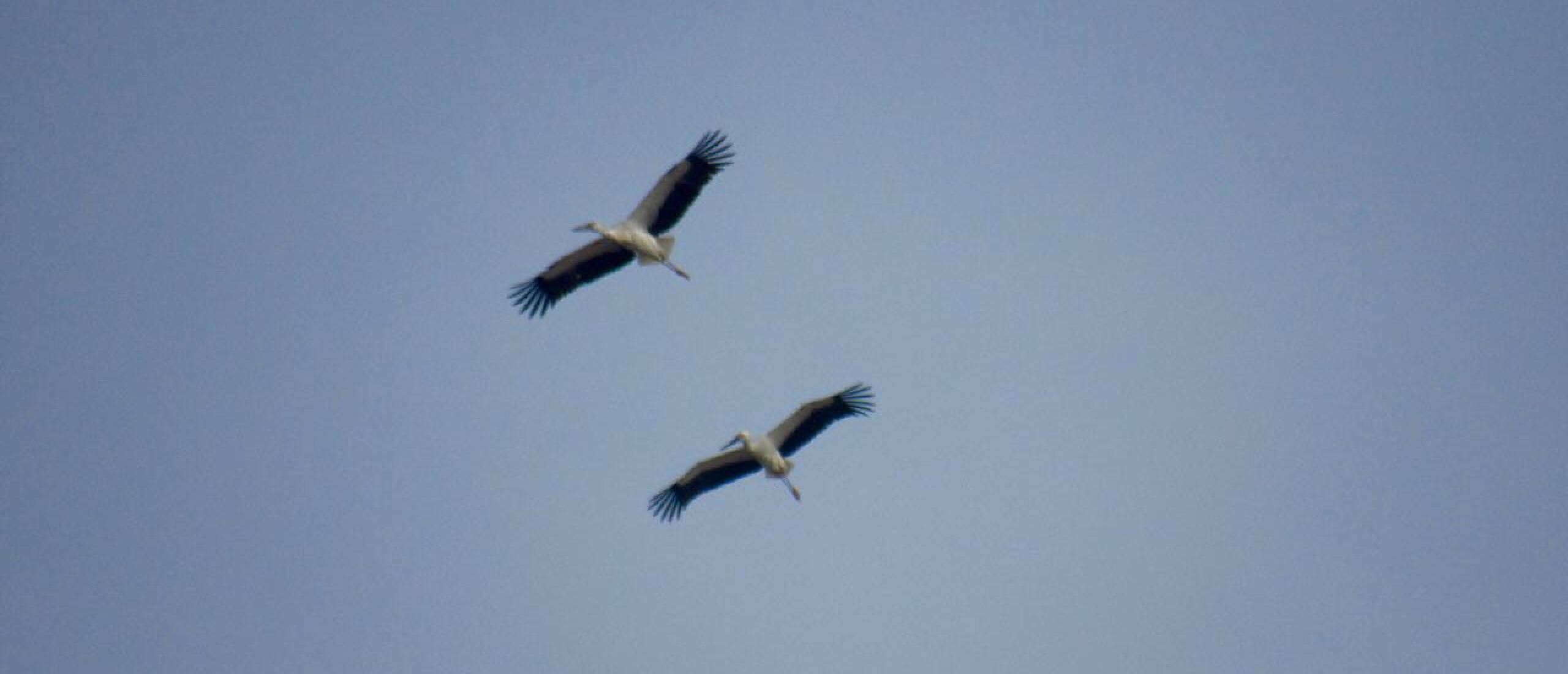
A quest in the mist The weekend of 20th and 21st January involved an exciting trip north from Shanghai to look for Red-crowned Cranes, perhaps one of the most culturally significant birds in both China and Japan. The aim was to visit one of their principal wintering grounds near Yancheng, where between 600 and 1000 of these birds spend the colder months of the year. The total World population of this iconic species is estimated at just 2750 wild birds, so we were certainly keen to see them. The weekend was organised by my friends at Spoon-billed Sandpiper in China, an organisation dedicated to saving that species, and was led by Zhang Lin, one of eastern China’s top birders, known by his followers as Master Zhang. The group met on the Friday evening in Shanghai, and we then drove north to the small fishing port of Shuilonggang, where we checked into our slightly basic hotel for a short but surprisingly comfortable night followed by a delicious breakfast. We then continued our journey northwards, eventually arriving at Xinyang, a small town near the renowned Yancheng Red-crowned Crane Reserve, and we checked our bags into our hotel for the coming night before heading out to start our search.
 The group getting started on the Saturday morning
The group getting started on the Saturday morning
What we had not bargained for was thick fog. Cranes are not easy to see in fog, and neither are any birds! However, we did succeed in finding quite a number of interesting species even in spite of the adverse weather conditions, including large numbers of Common Cranes, Bean Geese, Pallas’ Reed Buntings and Chestnut-eared Buntings. But surely the best bird at our first stop was one that I had only seen once before, near Tianjin, and then only distantly, the extraordinary-looking and near threatened Reed Parrotbill.
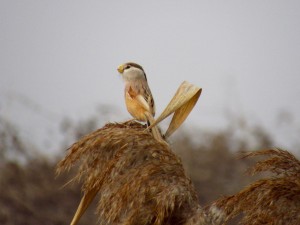 Reed Parrotbill is a range-restricted eastern Chinese endemic species
Reed Parrotbill is a range-restricted eastern Chinese endemic species
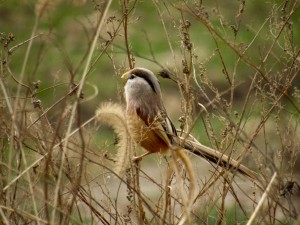 With its strange, stubby bill, the Reed Parrotbill is an unusual-looking bird
With its strange, stubby bill, the Reed Parrotbill is an unusual-looking bird
This bird, which looks like a larger version of a Bearded Tit, but with a stubby, yellow bill, has a limited range in eastern China and is entirely restricted to reedbeds, a habitat type that is disappearing fast. It is very vocal, and has a wide variety of different calls, including a high-pitched piping trill. We were treated to outstanding views of these agile, long-tailed birds, and we were able to see why Parrotbills have such a powerful bill: they use it to tear into the reed stems, and they then eat the pithy interior. I had expected them to eat the reed seeds, but clearly they love the inside of the reed stalks.
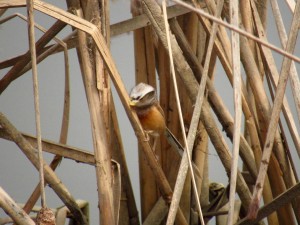 Reed Parrotbills use their strong bills to rip into the reed stems
Reed Parrotbills use their strong bills to rip into the reed stems
We spent most of the rest of the day cruising along tree-lined bunds between fields, and we scoured as much of the area as we possibly could, finding about four Hooded Cranes among their commoner cousins, but the magnificent white, majestic figure of the Red-crowned Crane was nowhere to be found. Other highlights included Naumann’s Thrush, Spoonbills and a few Oriental White Storks, which are almost as splendid and almost as rare as the mythical cranes.
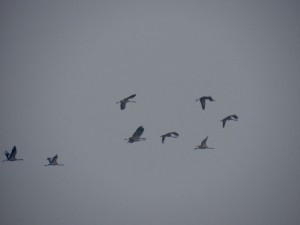 Common Cranes were much in evidence
Common Cranes were much in evidence
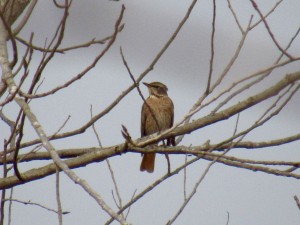 Naumann's Thrush was a bird I had only encountered once before, In Japan
Naumann's Thrush was a bird I had only encountered once before, In Japan
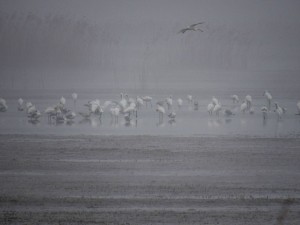 A large flock of Spoonbills could just be made out through the murk
A large flock of Spoonbills could just be made out through the murk
We finally retired to our hotel for a dinner and an early night. I was unable to understand the Chinese instructions on the air conditioning remote control and must have pushed a button that blocked the heating off completely, so I had a freezing night! Sunday dawned even foggier, but we were out early and the quest for the Red-crowned Cranes continued, with even less visibility. In spite of this, we had more close encounters with the Reed Parrotbills, which again were ripping the reed stems to get at the pithy interior.
 It was chilly in the fog on the Sunday morning
It was chilly in the fog on the Sunday morning
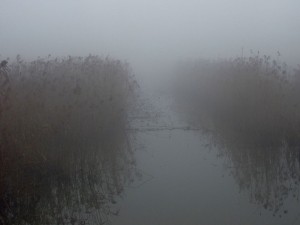 Visibility was worse than the previous day
Visibility was worse than the previous day
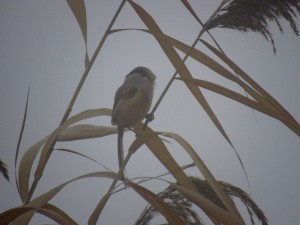 Reed Parrotbill posing through the mist
Reed Parrotbill posing through the mist
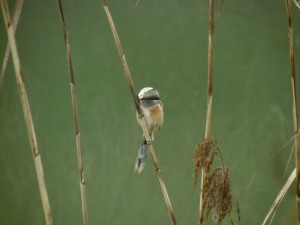 The Reed Parrotbill was ripping its way into the reed stem
The Reed Parrotbill was ripping its way into the reed stem
We could hear Common Cranes calling as they passed over us in the fog, and then a much deeper bugling alerted us to the fact that our quarry was there, just above us, but invisible in the fog. This happened on three occasions, and suddenly all members of the group except me had seen four Red-crowned Cranes through a slightly clearer patch of mist, but try as I might, I just could not see them. I was mortified!
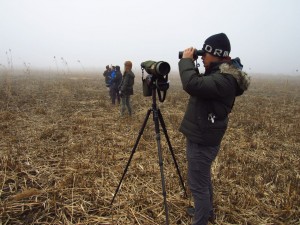 Searching for cranes in fog is a discouraging activity
Searching for cranes in fog is a discouraging activity
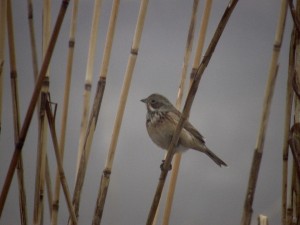 A Chestnut-eared Bunting showed through the fog
A Chestnut-eared Bunting showed through the fog
We continued our search throughout the morning, but to no avail. Our guide Zhang Lin suggested that we visit the main official tourist park, where at least we would see captive Red-crowned Cranes, so we drove to the main entrance and walked into the park. The main building features a tower themed on a crane’s head.
 The Red-crowned Crane reserve at Yancheng
The Red-crowned Crane reserve at Yancheng
 The main tower is shaped like a crane's head
The main tower is shaped like a crane's head
Beyond this is a large area of pools and reedbeds, but there was no sign of any crane activity at all. We then started walking along a long straight roadway, and we were treated to the rare sight of no fewer than twelve Oriental White Storks circling high overhead.
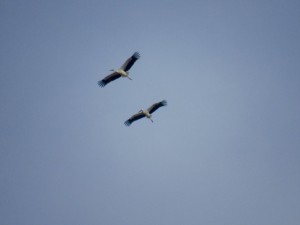 Oriental Storks are almost as rare as Red-crowned Cranes
Oriental Storks are almost as rare as Red-crowned Cranes
And then, just as we were thinking of giving up, two magnificent, elegantly gliding white birds appeared low in the sky far ahead of us, and a quick look through the binoculars revealed them to be Red-crowned Cranes, with their black secondaries and necks contrasting with their pure white plumage. The mist had by this time cleared, and the sun illuminated these splendid birds beautifully.
We then went on to see another three, this time on the ground against a reedbed on the far side of a large pool. Unusually, all three members of this family appeared to be adult birds. So finally, after so much effort, our quest was fulfilled and we had seen the Red-crowned Cranes, the birds we had so ardently pursued.
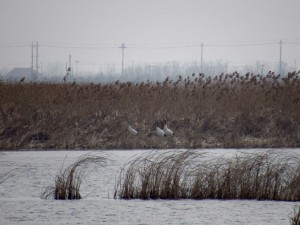 Three distant Red-crowned Cranes, apparently in a family party, yet all three adult birds
Three distant Red-crowned Cranes, apparently in a family party, yet all three adult birds
Just before departing, I briefly inspected the area in which the captive birds were kept. I was rather dismayed to find a strange semi-circular structure divided into small pens, in each of which was a captive Red-crowned Crane, each bird with hardly room to move. In one pen, there was a lone African Wattled Crane. What it was doing there I have no idea. Apparently these birds are let out in front of an audience to dance for the tourists. What an undignified destiny for the bird that symbolizes dignity.
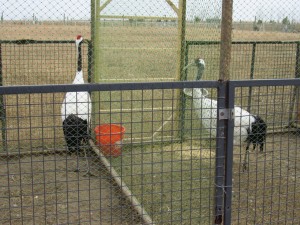 Is it really necessary to keep Red-crowned Cranes like this?
Is it really necessary to keep Red-crowned Cranes like this?
And so this highly enjoyable trip came to an end. My thanks go to the entire group, especially Zhang Lin, the master birder, Lisa, his co-driver and the powerhouse of Spoon-billed Sandpiper in China, and to my dear friend Ziyou, who alerted me to these weekend birding trips and whose impressive winter hat makes a fine spectacle!


